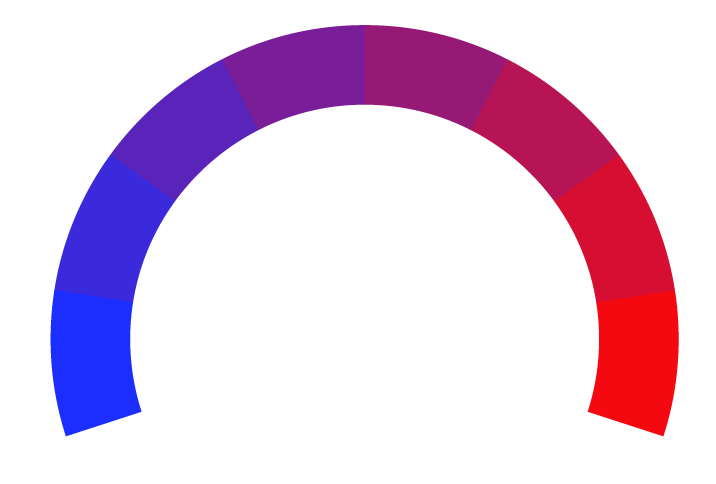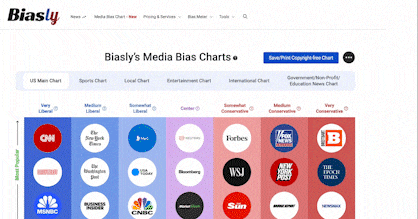 The Boston Globe Article Rating
The Boston Globe Article RatingWith Roe v. Wade in trouble again, a different strategy may be required - The Boston Globe
- Bias Rating
- Reliability
N/AN/A
- Policy Leaning
98% Very Right
- Politician Portrayal
-2% Negative
Continue For Free
Create your free account to see the in-depth bias analytics and more.
By creating an account, you agree to our Terms and Privacy Policy, and subscribe to email updates.
Bias Score Analysis
The A.I. bias rating includes policy and politician portrayal leanings based on the author’s tone found in the article using machine learning. Bias scores are on a scale of -100% to 100% with higher negative scores being more liberal and higher positive scores being more conservative, and 0% being neutral.
Sentiments
N/A
- Liberal
- Conservative
| Sentence | Sentiment | Bias |
|---|---|---|
Unlock this feature by upgrading to the Pro plan. | ||
Reliability Score Analysis
Policy Leaning Analysis
Politician Portrayal Analysis
Bias Meter
Extremely
Liberal
Very
Liberal
Moderately
Liberal
Somewhat Liberal
Center
Somewhat Conservative
Moderately
Conservative
Very
Conservative
Extremely
Conservative
-100%
Liberal
100%
Conservative

Contributing sentiments towards policy:
54% : Between 1989 and 1991, FOCA did not advance in Congress, but support for it grew in 1992 after the Supreme Court decided Planned Parenthood v. Casey.52% : Under this less protective standard, states could regulate abortion throughout pregnancy to foster "informed choice" and express the state's "profound respect for the life of the unborn," so long as such regulations were "not a substantial obstacle" to exercising that choice.
48% : The Supreme Court's 1973 decision affirmed the right to abortion on the grounds that it preserved a woman's right to privacy.
46% : Chief Justice William Rehnquist, in a part of the court's opinion joined by three other justices, suggested that the "key elements of the Roe framework" -- such as its delineation of when government could regulate abortion -- were "not found in the text of the Constitution, or in any place else one would expect to find a constitutional principle.
46% : The most recent version of the bill draws a connection between access to abortion and "reproductive justice" as part of a human right to reproductive health.
45% : In that decision, the Supreme Court opened the door to far more state regulation of abortion.
44% : Justice Sandra Day O'Connor did not join that part of the opinion, but she still voted that the Missouri law was constitutional and had already written opinions stating that Roe had adopted a "completely unworkable method of accommodating the conflicting personal rights" inherent in abortion.
44% : The bill also said that a state could not restrict the right to abortion at any time during pregnancy (including after viability) "if such termination is necessary to protect the life or health of the woman."
42% : Roe had required courts to invalidate the majority of regulations on abortion.
41% : The joint opinion in Casey never referred to abortion as a "fundamental right."
41% : Roe also said little about the relationship between abortion and equality for women, let alone the broader issues of economic and racial inequality in access to health care that some have made part of calls for reproductive justice.
40% : The text of the bill in 1992 stated that codifying Roe did not "prevent a state from declining to pay for the performance of abortion" or stop a state from mandating parental involvement.
40% : The bill would forbid states from treating abortion differently from other comparably safe medical procedures and thereby limiting access to the procedure.
39% : Treating abortion as an issue of privacy justified the Supreme Court's decisions in later cases to uphold bans on public funding for abortion and further isolated abortion from other health care.
34% : While polls show that Americans favor some restrictions on abortion, there is strong support for keeping the procedure legal, and bans on abortion early in pregnancy tend to be deeply unpopular.
21% : Progressives such as Maxine Waters argued that by failing to ensure funding for abortion for women who could not pay for it, FOCA would let down the pro-choice movement's most vulnerable constituents.
*Our bias meter rating uses data science including sentiment analysis, machine learning and our proprietary algorithm for determining biases in news articles. Bias scores are on a scale of -100% to 100% with higher negative scores being more liberal and higher positive scores being more conservative, and 0% being neutral. The rating is an independent analysis and is not affiliated nor sponsored by the news source or any other organization.






















